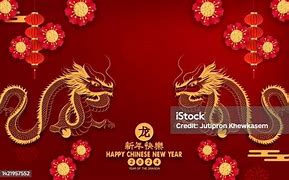
Char Kuey Teow Parit / Longkang
Image Credit: Char Kuey Teow Parit / Longkang
Unlike the common Chinese-style Fried Kway Teow, Char Kuey Teow Parit/ Longkang is something special. Drenching in thick prawn broth, makes the wet version of Char Kway Teow tastes even briny! Moreover, this is an incredible Halal option, making it a must-visit spot for Malay Char Kway Teow in Penang.
Image Credit: Char Kuey Teow Parit / Longkang
Besides, on top of Kway Teow is a deep-fried egg that patrons love most! Despite the generous amount of ingredients, the price is pretty pocket-friendly! Moreover, this popular food stall is giving off a super chilly vibe, especially its open-air concept at night. In addition, make it your go-to supper spot for CKT Penang in the wee hours, that’s surely satisfying!
Additional Information: Address: Jalan Mahsuri, Bandar Bayan Baru, 11900 Bayan Lepas, Pulau Pinang. Operation Hours: 08:30 pm to 04:30 am (Closed on Sundays) Contact Number: +60 17-403 9258 Website: Char Koay Teow Parit / Longkang / Nasi Goreng Hangit (Char Koay Teow Paksu)
Siam Road Charcoal Char Kuey Teow
Image Credit: Siam Road Charcoal Char Kuey Teow
Penang Best Char Kway Teow can never go wrong with Siam Road Charcoal Char Kway Teow! In addition, the Wok Hei aroma of charcoal-fired Char Kway Teow is truly unbeatable! Think of it, a steaming dish with a strong fire kiss, that’s about to be super yummy-licious!
Image Credit: Siam Road Charcoal Char Kuey Teow
Furthermore, a long queue is a must at Siam Road Char Kway Teow Penang. Anyway, patrons find it time-worthy while enjoying the blazing fire show, that’s kinda stunning! Besides, simple tables and stools are enough for a relaxing vibe. In addition, it’s time to enjoy your piping hot Siam Road Char Koay Teow, wow, here comes the kick of extra spicy!
Additional Information: Address: 82, Jalan Siam, George Town, 10400 George Town, Pulau Pinang. Operation Hours: 12:00 pm to 06:00 pm (Closed on Mondays & Sundays)
Ah Shen Presgrave Street Duck Egg Char Koay Teow
Speaking of duck egg char koay teow, one of the most popular spots for this upgraded version of char koay teow on Penang Island is a humble shoplot on Presgrave Street. Manned by local foodie Ah Shen, the stall sells smoky char koay teow (stir-fried over a charcoal fire for extra wok hei) topped with a sunny side up duck egg. The duck egg elevates the entire dish, giving it a richer, creamier flavour that goes well with the springy rice noodles and crunchy bean sprouts. Don’t forget the spicy sambal too!
Opening Hours: Daily 3–10pm
67b, Lebuh Presgrave, 10300 George Town, Pulau Pinang
History and etymology
The dish was often sold by fishermen, farmers and cockle-gatherers who doubled as char kway teow hawkers in the evening to supplement their income.[7] The high fat content and low cost of the dish made it attractive to these people as it was a cheap source of energy and nutrients.[8]
The term "char kway teow" is a transliteration of the Chinese characters 炒粿條 (in simplified Chinese 炒粿条). The dish's name is Hokkien (chhá-kóe-tiâu?), but the dish may have its roots in Chaozhou in China's Guangdong province and is mostly associated with the Teochew.[2] The word kóe-tiâu (literally meaning "ricecake strips") generally refers to flat rice noodles, which are the usual ingredient in Singapore and West Malaysia. There is no fixed way of spelling chhá-kóe-tiâu, and many variants can be found: examples include "char kueh teow", "char kuey teow", "char koay teow", "char kueh tiao", "char kuay tiaw", "char kueh tiaw" and so on.[9]
The dish is sometimes called kwetiau goreng or kuetiau goreng in Malay, which conveys the same meaning.[10][9] In March 2021, Dewan Bahasa and Pustaka (DBP), Malaysia's authority on standardised Malay, formally declared that the proper spelling of flat rice noodles in Malaysian Malay is kuetiau.[9] In Indonesia, the dish is generally called kwetiau goreng, although some regions use the term mitiau instead of kwetiau. Conversely, kuetiau is rarely used in Singapore, with kway teow being used instead.
Owing to the dish's popularity and spread to Cantonese-speaking areas, the term "char kway teow" has been corrupted into "炒貴刁" (Cantonese Yale: cháau gwai dīu; pinyin: cháo guì diāo) when presented in the aforementioned areas. The term "貴刁" has no real meaning, but its pronunciation in Cantonese and Mandarin is similar to "粿條" in Min Nan.
"Gourmet" versions of char kway teow, in which the dish may be prepared with more seafood, with crab meat[11] and with duck eggs, may be found in major Malaysian cities like Ipoh and Penang.[12] In Penang, char kway teow is commonly served on a piece of banana leaf on a plate, which is intended to enhance the aroma of the dish.[13]
Char kway teow is a popular, inexpensive dish usually eaten for breakfast and sold at food stalls in Singapore.[14] Blood cockles and prawns are standard fare in typical hawker preparations, while more expensive or luxurious versions incorporate cuttlefish, squid, and lobster meat. Singaporean style char kway teow mixes yellow wheat noodles with flat rice noodles. Some cooks prepare more health-conscious versions with extra vegetables and less oil.[6]
Char kway teow prepared by Muslims in Malaysia and Singapore excludes lard and pork products, and may incorporate alternative ingredients like beef or chicken.[5][10] Some versions by Malay cooks may emphasise the use of kerang (Malay for cockles) as a key ingredient, and it may be prepared with or without gravy.[15][16]
Many Southeast Asian restaurants in Hong Kong offer char kway teow as an overseas specialty, although it is of Southeast Asian Chinese origin. The char kway teow offered in Chinese restaurants which serve Hong Kong-style Cantonese cuisine is an entirely different dish: stir-fried Chinese-style flat rice noodles with prawns, char siu, onions, and bean sprouts, seasoned with curry powder which renders it bright yellow in colour.[17] In some places this is known as Fried "Good Dale", a transliteration of the characters "炒貴刁".[18][17]
A large serving of char kway teow
Singaporean-style char kway teow, cooked with a mixture of yellow wheat noodles and flat rice noodles
Penang-style char kway teow, here served on a piece of banana leaf
Small plates of char kway teow served at a Singapore
Penang Char Kway Teow là món ăn nổi tiếng của thành phố Penang, Malaysia, nhưng thực khách vẫn có thể tìm thấy món ăn này tại các khu ẩm thực người Hoa ở nhiều nơi khác. Char Kway Teow được làm từ hủ tiếu gạo bản cán dẹt (tương tự như sợi phở) xào lên cùng với nước sốt cay, trứng, giá hẹ, lạp xưởng, chả cá và thêm hải sản như nghêu, sò, tôm... tùy thích.
Char Kway Teow có nhiều nét tương đồng với món phở xào của Việt Nam, nhưng bằng cách chế biến cũng như thêm vào những gia vị riêng đã tạo nên món hủ tiếu xào đặc trưng của Malaysia. Đây là một trong những món dễ ăn nhất và có phần gần gũi với khẩu vị người Việt.
Khi chế biến món ăn này, người đầu bếp sẽ phải chỉnh mức nhiệt lên cao nhất và xào hủ tiếu trong chảo sâu lòng với gia vị gồm xì dầu, sốt ớt cay đặc trưng của Char Kway Teow. Mỗi nơi bán Char Kway Teow sẽ có một cách chế biến sốt ớt riêng, nhưng điểm chung là đều có vị cay the đặc trưng. Thậm chí, khi hòa quyện cùng dầu mỡ thì món ăn này lại thêm phần cay gấp bội. Sự hòa quyện của nhiều loại hương vị này đã tạo nên một món ăn đậm đà khó quên của ẩm thực Malaysia.
Do xào trên lửa to nên công đoạn chế biến món Char Kway Teow cũng diễn ra rất nhanh. Đặc biệt, người đầu bếp còn phải tập trung để món ăn xào được đều tay, thấm đều gia vị và không bị cháy.
Được mệnh danh là “Vua Char Kway Teow” của Penang, người đàn ông lớn tuổi này với chiếc xe đẩy nằm góc đường Siam và đường Anson đã làm xao xuyến biết bao tín đồ của món ăn này. Không chỉ người dân địa phương mà cả khách du lịch cũng đều tò mò tìm đến thưởng thức, theo misstamchiak
Char Kway Teow ngon nhất là thưởng thức nóng ngay khi vừa xào xong. Nhờ không cho nhiều gia vị trong quá trình chế biến nên thấy rõ được vị mặn mà của xì dầu, vị ngọt quyện của tôm, giá hòa quyện cùng sự thơm dậy mùi của trứng, hành hoa, và tất nhiên sẽ không thể thiếu vị cay nồng đặc trưng của sốt ớt.
Gần đây, món ăn đã được đổi mới theo hướng có lợi cho sức khỏe hơn khi những đầu bếp cho thêm nhiều rau xanh và giảm bớt dầu mỡ. Trước đây, người ta thường dùng mỡ heo và những miếng tép mỡ giòn tan để xào với mì gạo tạo ra một hương vị béo ngậy đặc trưng, nhưng ngày nay họ thay thế mỡ heo bằng dầu ăn hoặc bơ thực vật. Điều này không chỉ làm cho món ăn tốt hơn cho sức khỏe mà rau xanh và giá còn mang đến vị tươi mát và giòn, làm tăng chất lượng cho món ăn.
Các thực phẩm dùng để chế biến cho món ăn này mọi người có thể đặt mua trên các ứng dụng đi chợ hộ trực tuyến như ShoppeFood, Grab, Gojek hoặc tùy vào nguyên liệu có sẵn trong nhà mà thêm hay bớt tùy thích.
Mùi thơm tỏa ra từ món ăn sẽ kích thích tất cả các giác quan của thực khách, từ thị giác đến khứu giác và thính giác, và tất cả điều đó có thể diễn ra thậm chí trước khi thực khách được thực sự nếm món ăn này. Hủ tiếu xào cay Char Kway Teow chắc chắn là một món ăn thơm ngon khiến cho ai một lần thưởng thức qua cũng phải ngây ngất và mê mẩn.
No. 5 Char Koay Teow @ Jalan Macalister
Photo: @_meryling26 (Instagram)
CKT here may look simple but we guarantee that it surely packs a burst of epic flavours! As a famous spot, the queue will be so worth it once you’re feasting on your own plate of top notch char koay teow.
Photo: @dad_dish (Instagram)
No. 5 Char Koay Teow @ Jalan Macalister
Address: 49, Jln Macalister, George Town, 10450 George Town, Pulau Pinang
Operating Hours: Monday to Saturday (12 – 10 pm), Closed on Sundays
Ah Heng Duck Egg Char Koay Teow
Let me just go on record to say that this is my personal pick for the best char koay teow in Penang. And it’s not even located on Penang Island! Ah Heng Duck Egg Char Koay Teow is a legendary foodie hotspot in Bukit Mertajam (in Mainland Penang) that’s been in operation for nearly 40 years. It’s so famous that some Penangites will make the 40-minute journey across the Penang Bridge just for a taste.I love it because of the smokey noodles and the rich, runny sunny side up duck egg. And the fact that it’s literally five minutes away from my house.
Opening Hours: Daily 8pm–11:30pm; closed on Wednesdays
2741, Jalan Kulim, 14000 Bukit Mertajam, Pulau Pinang
Lilys Vegetarian Kitchen
Image Credit: Lilys Vegetarian Kitchen
Wondering about the best vegetarian Char Kway Teow Penang? Here comes the Lilys Vegetarian Kitchen, offering meat-free and healthier dishes to foodies. Moreover, this eatery has air-conditioning, which could be a savior for the summer heat in Penang Malaysia! Besides, warm lighting and marble sets give off a carefree mood, it’s perfect for family gatherings!
Image Credit: Lilys Vegetarian Kitchen
Furthermore, there goes a tasty Char Kway Teow with different spicy levels. In addition, true, it’s dairy-free and eggless, but what to do, the taste is still a hit anyhow! Besides, thumbs up to tofu, not sure how could a simple tofu be this yummy. Furthermore, non-spicy lovers better go for the dark soy sauce version, that’s advice!
Additional Information: Address: 98, Lorong Madras, 10400 George Town, Pulau Pinang. Operation Hours: 11:00 am to 08:00 pm (Closed on Mondays) Contact Number: +60 4-226 3810 Website: Pam’s Vegetarian / Lily’s Vegetarian Cafe
Image Credit: Bee Hwa Cafe
Finding a Halal Chinese Char Kway Teow could be tough in Penang, but that’s not the story in Bee Hwa Cafe. Moreover, this long-standing coffee shop is so popular, selling the best Char Kway Teow for all ethnic backgrounds! In addition, stepping in makes patrons feel the nostalgic charm of old stuff and patterned flooring, that’s pretty cool!
Image Credit: Bee Hwa Cafe
Besides, the Halal Char Kway Teow Penang tastes the best straight away from the Wok! With crab sticks, fish balls, chili paste, shrimp, cockles, and garlic chives. In addition, crunching in chili chops for an extra hot and spicy kick, that’s how spicy lovers do! Notably, there are more Halal foods like Curry Mee and Hokkien Mee, they are all worth trying out!
Additional Information: Address: 10, Lebuh Dickens, George Town, 10050 George Town, Pulau Pinang. Operation Hours: 07:00 am to 03:00 pm (Closed on Sundays) Contact Number: +60 12-854 0005 Website: Bee Hwa Cafe
Left-handed Char Koay Teow
For Muslim travellers, perhaps one of the biggest problems with Penang char koay teow is that most of them come with pork lard and Chinese sausage. Left-handed Char Koay Teow (yes, that’s literally the store name) is one of the few places in Penang where you can get pork-free Chinese char koay teow (you’ll see why we used this term later on). Even without the inclusion of some traditional ingredients, the friendly uncle (who’s a lefty) still manages to captivate customers with his flavourful plate of smokey noodles.
Opening Hours: Daily 11am–7pm
79-G-11, Ivory tower, Kampung Jawa Baru, Off, Jalan Dato Keramat, 10150 George Town, Penang
Siam Road Charcoal Char Koay Teow
You know the advice of visiting a famous eatery: come with plenty of tummy space, and also with plenty of patience.
The pioneer of charcoal-fueled char koay teow which once operated by the roadside and now a Michelin-approved stall, Siam Road Char Koay Teow is one of the oldest CKT hawkers in Penang, and arguably one of the very best.
We arrived half an hour before its opening time, and was already met with a short queue which grew exponentially when the hawkers arrived. The queuing and ordering system was rather seamless with the auntie’s sharp attentiveness and clear instructions for customers to keep things in order.
We all know of the elderly uncle, affectionately known as Uncle Tan, and the king behind Siam Road’s treasured plates of charred goodness. Since his retirement, his son has taken over the helming of the store and stove.
Melting from the heat in line wasn’t half as torturous as it would have been, if not for the uncle’s artisan display of frying the dish.
Unostentatious and laser-focused in his craft, he cooked in such a habitual efficiency, it was an awe to witness. The oil and pork lard triggers the sizzling, and in goes the rest of the ingredients in quick succession, interspersed with swishes of spatula and the addition of hot coals beneath the wok.
Rest assured that Siam Road’s char koay teow remains just as divine. A small-sized plate priced at RM9 is simple in its conception, with chilli-coated rice noodles interlacing thickets of eggs, decently plump and seared prawns, sweet lap cheong or Chinese sausages that have been singed in all the right corners, and fresh cockles that melts in your mouth.
The best part about this dish is its smoky wok hei aroma that is evident all the way till your plate is wiped clean, layered with the flavour of the pork lard which makes the dish sinfully moreish.
Our only gripe is for them to limit the number of orders per person – having a customer right at the front of the queue who smugly ordered 16 packets of CKT was not fun for the those at the back of the queue.
Address: 82, Jalan Siam, George Town, 10400 George Town, Penang Opening hours: Tue – Sat 12pm-6.30pm (Closed on Mondays & Sundays)
Left-handed Char Koay Teow
Left-handed Char Koay Teow has a loyal following since its glory days at Penang Road. We were glad to see that nothing much has changed since the eatery moved to Ivory Tower, thanks to the uncle’s friendly demeanour and his nearly immaculate plate of char koay teow.
Upon arrival, we were greeted by the uncle’s easy smile – and his wall of photos with famous celebrities and public figures who have visited his stall – which only got wider when we whipped out our cameras.
Brandishing a metal spatula in his left hand – now you know how the name of his stall came about – and skillfully manoeuvring the wok with the other, he deftly char the noodles with an easy flourish, excitedly flaunting his “fire art” in the process.
In a flash, our RM9 plate of char koay teow was ready to be devoured.
Here, the wok hei flavour reigns – but maybe a tad too much. Considering the fancy fire display, it was no surprise that the rendition here leaned towards the sore-throat-inducing side, but we weren’t complaining. Visible egg bits coat the al-dente noodles moreishly, cockles appear in abundance, and the prawns are nicely charred through.
But what amazed us was the fact that Left-handed Char Koay Teow does not use the standard pork lard bits or oil in their CKT – it is a no pork and no lard stall. Yet, their dish carries such intense flavour which attest to the cook’s culinary skills.
Address: 79-G-11, Ivory tower, Kampung Jawa Baru, Off, Jalan Dato Keramat, 10150 George Town, Penang Opening hours: Thu – Tue 11am-7pm (Closed on Wednesdays) Contact: 019-394 9185
Predictably, Siam Road’s CKT was easily our favourite, with No.5’s pleasantly surprising us with its unexpected flavours and tastiness. Regardless, we slurped up every single one on this list of char koay teow in Penang’s George Town, our lips upturned, crimson and grease-smeared.
What can we say other than Penangites just know what’s best, especially when it comes to CKT. And if there’s a dish that locals can get extremely critical of – purely because it is such a pride of the state – it is the lauded char koay teow.
So while we may find pleasure in debating on which CKT is truly the best in Penang, let’s not forget to appreciate that we are blessed to have a plethora of choices to feast on this phenomenal heritage hawker dish.
Make sure you’re not missing out on yummy gems in Penang including these old-school bakeries for traditional pastries and cafes that serve amazing coffee for caffeine lovers.
Photography by Jia-Ju. Cover image adapted from: TheSmartLocal Malaysia.
Ẩm thực luôn là một phần không thể tách rời của những chuyến du lịch. Thường khi đi đâu, bên cạnh những điểm du lịch mang tính biểu tượng, kiểu gì người ta cũng phải tìm kiếm, "thủ" sẵn cho mình danh sách một số món ăn ngon, địa chỉ quán xá nổi tiếng.
Nếu đã từng đặt chân đến Malaysia thì chắc chắn bạn phải công nhận rằng, đây là đất nước sở hữu bản đồ ăn vô cùng phong phú và khác biệt hoàn toàn so với các nước khác. Một trong những món ăn được nhiều người truyền tai nhất định phải thử khi tới đây là Char Kway Teow (Char Koay Teow).
Nhiều người từng đi du lịch Malaysia đã phải công nhận rằng, đồ ăn bản địa Malaysia có phần khó ăn với khẩu vị người Việt bởi sự khác biệt trong nguyên liệu, gia vị nấu nướng. Và Char Kway Teow là một trong những món dễ ăn nhất và có phần gần gũi với hương vị món Việt.
Mặc dù char kway teow đã trở thành đồng nghĩa với ẩm thực đường phố Penang, nhưng nguồn gốc của nó lại ở Trung Quốc. Vào thế kỷ 19, làn sóng di dân Hoa kiều khiến người Triều Châu và Phúc Kiến từ các tỉnh Quảng Đông và Phúc Kiến ở đông nam Trung Quốc đến đây. Trong cùng thời gian đó, Penang phát triển dưới sự cai trị của Anh và trở thành một trung tâm trung chuyển nhộn nhịp đem đến nhiều cơ hội việc làm.
Người Phúc Kiến đến Penang làm việc trong các đồn điền cao su và làm thương nhân và lái buôn, trong khi người Triều Châu tìm việc làm ở các mỏ thiếc và làm ngư dân. Họ đem theo một số thứ chủ yếu trong gian bếp của họ như xì dầu, đậu hũ miếng và hủ tíu gọi là 'kway teow'.
Trong tiếng Phúc Kiến, 'char' có nghĩa là 'xào' và 'kway teow' có nghĩa là 'sợi bánh bột gạo', dùng để chỉ hủ tíu. Thứ mà khởi thủy chỉ là món hủ tíu xào đơn giản ở các tỉnh đông nam Trung Quốc với thịt heo, nước mắm và nước xì dầu đã được biến đổi thành món ngon hải sản khi nó đến bờ hòn đảo này.
Lúc đầu, nó được các ngư dân và người đi nhặt sò muốn kiếm thêm bán vào ban đêm. Thay vì các nguyên liệu truyền thống, họ sử dụng những gì có sẵn nhiều để làm nên phiên bản điều chỉnh của món ăn. Đó là món ăn của người nghèo và những Hoa kiều sống trên đất Malaysia thời đó, bởi nó là một món ăn nhanh, rẻ, ngon miệng để họ có sức hàng giờ dưới nắng nóng. Món này đã trở thành món chủ đạo của dân lao động.
Char Kway Teow có thể hiểu là món hủ tiếu xào, được xem là đặc sản của Penang. Nhưng tất nhiên với sự nổi tiếng của mình, độ phủ sóng của Char Kway Teow chắc chắn không chỉ dừng ở Penang mà còn được bán rộng rãi ở các khu food court ở các thành phố khác của Malaysia.
Chẳng khó để tìm được một quầy hàng hay một xe đẩy bán Char Kway Teow di động, nhưng lại rất khó để nhận diện nó. Tuy nhiên, hãy chú ý đến những nơi có người đầu bếp đang xào đồ ăn trên chảo với từng động tác uyển chuyển, nhanh nhẹn và đặc biệt phảng phút mùi khói cay bốc lên thì đó chính là quầy bán Char Kway Teow.
Nguyên liệu của Char Kway Teow kì thực siêu đơn giản, một nắm hủ tiếu gạo bản mỏng, dẹt như bánh phở, giá, hành, trứng, còn tôm và lạp xưởng thái mỏng thì tùy chọn và có nơi có, nơi không. Char Kway Teow xào nhiệt cao trong chảo sâu lòng với gia vị chỉ gồm chút xì dầu, và sốt ớt cay đặc trưng. Nếu có tôm thì xào tôm trước cho chín, kế đó mới đến hủ tiếu, giá, trứng và sốt ớt.
Không rõ sốt ớt ở tiệm Char Kway Teow này chế biến thế nào, chỉ biết dù chỉ chút ít thôi cũng đủ để người ta xuýt xoa vì cay. Ai mà không ăn cay được lại quên dặn đầu bếp thì cứ xác định sẽ "xoắn" cả lưỡi vì cái cay của ớt lan trong từng sợi hủ tiếu. Mà đã thế, dường như cái nóng và dầu mỡ lại càng làm món ăn cay thêm gấp bội.
Char Kway Teow giống món hủ tiếu xào.
Mỗi nơi bán Char Kway Teow sẽ có một cách chế biến sốt ớt riêng, nhưng điểm chung là nơi nào cũng đều có vị cay xuýt xoa. Thế nên, ai mà không ăn cay được thì nhớ dặn đầu bếp cho ít sốt ớt thôi vì từng sợi hủ tiếu đều ngấm vị cay rất đậm. Thậm chí, khi hòa quyện cùng dầu mỡ thì món ăn này lại thêm phần cay gấp bội.
Các công đoạn chế biến của món này diễn ra rất nhanh. Và do xào lửa to nên đòi hỏi người đầu bếp phải rất tập trung để món xào được đều tay, thấm đều gia vị, không cháy. Có thể đĩa Char Kway Teow mới có thể khiến thực khách thương nhớ, thèm thuồng.
Char Kway Teow vì là món dầu mỡ nên ngon nhất là lúc vừa xào xong. Món này vì nêm ít gia vị nên ăn thấy rõ cái mặn mà của xì dầu, vị ngọt của tôm, giá, quyện cùng độ thơm của trứng, hành hoa, và tất nhiên là cái cay đặc trưng của sốt ớt.
Ở Malaysia, Char Kway Teow chính là món ăn đường phố đích thực, khi vừa có vô số quầy trên đường phố, vừa có thể phục vụ trong những hộp giấy, đĩa nhựa để thực sự có thể đứng ăn cơ động. Một phần Char Kway Teow sẽ có giá từ 6 đồng đến hơn 12 đồng, tùy vào nơi bán cũng như phần nhân đi kèm. Thông thường Char Kway Teow phiên bản chỉ trứng giá thường chỉ 6 RM, tương đương 30 nghìn đồng, các phiên bản thêm tôm sẽ đắt hơn, tùy lượng tôm trong phần ăn.
Chú Tan, cách người ta gọi ông, là một người đàn ông 79 tuổi rắn chắc với mái tóc bạc trắng và ánh mắt sáng rực hiểu biết.
Ông đã nấu món độc nhất này trên một chiếc chảo lưu động gắn vào xe đạp và được đẩy vào vị trí bên đường Siam ở trung tâm George Town trong hàng chục năm. “Tôi không nhớ mình bao nhiêu tuổi khi bắt đầu. Nhưng char kway teow là tất cả những gì tôi biết”, chú Tan nói.
Sự nổi tiếng không ngờ của chú Tan bắt đầu hồi năm 2012 khi ông được một người địa phương phỏng vấn và đưa lên Facebook. Kinh nghiệm nấu nướng hàng chục năm, kết hợp với hương vị nhiều tầng của hủ tíu mỡ màng ám mùi khói được cân bằng hoàn hảo với lạp xưởng mặn - ngọt, nhanh chóng khiến những người trẻ có tâm hồn ăn uống chảy nước miếng. Không có gì bằng một dĩa hủ tíu đơn giản với câu chuyện thú vị tiếp sau đó.
Năm 2015, đầu bếp nổi tiếng Martin Yan, được biết đến với chương trình truyền hình Yan Can Cook đã ghé thăm quán của ông trong chương trình 'Hương vị Malaysia'. Nhờ có chương trình này mà làm nên thương hiệu “Vua hủ tíu xào” của chú Tan, món Char Kway Teow của chú được xếp hạng 14/50 tại Đại hội Ẩm thực Đường phố Thế giới năm 2017.
Ngày nay, chiếc xe chảo ven đường của ông là điều không thể thiếu trong giới ẩm thực và ông được nhiều người tôn sùng là phục vụ món char kway teow ngon nhất, hợp vị nhất ở Malaysia, bán ra hàng trăm dĩa mỗi ngày và thực khách phải xếp hàng hàng gi
Một số người nói rằng than củi là bí quyết thành công của chú Tan, nhưng “khách hàng thích món Char Kway Teow của cha tôi hơn người khác là vì ông đã hoàn thiện nó trong 60 năm. Các quán khác cũng dùng than và nguyên liệu tương tự, nhưng không ai có cái tài nấu như ông. Ngay cả anh trai tôi Kean Huat, vốn học nghề từ ông, cũng không có”, con trai của chú Tan là anh Evelyn nói.
“Tôi thề. Không có nước sốt bí mật nào cả; đó là tài nấu nướng của ông. Tôi không thể làm ngon như anh hay cha. Anh tôi mất nhiều năm để học từ cha và tay nghề của anh ấy vẫn đang tiếp tục cải thiện. Việc này mất cả đời. Cũng là nguyên liệu ấy, nhưng nếu tôi xào thì hương vị lại khác hoàn toàn”, con trai của ông Tan quả quyết.
Đến Malaysia, Char Kway Teow thực sự là món đáng thử, đặc biệt nếu bạn không ăn được các món có cari. Một đĩa Char Kway Teow nóng hổi, đến cái khói cũng cay không chỉ là cách để khám phá về ẩm thực Malaysia mà sẽ còn là dấu ấn khó quên trong chuyến du lịch.























